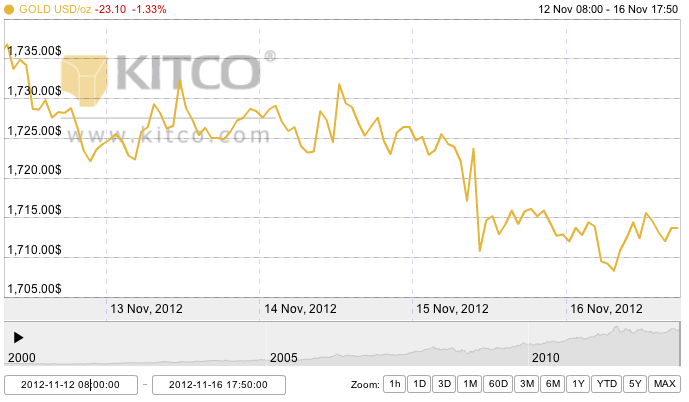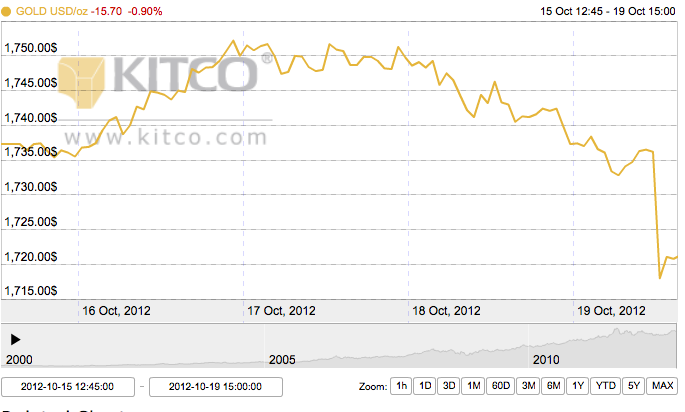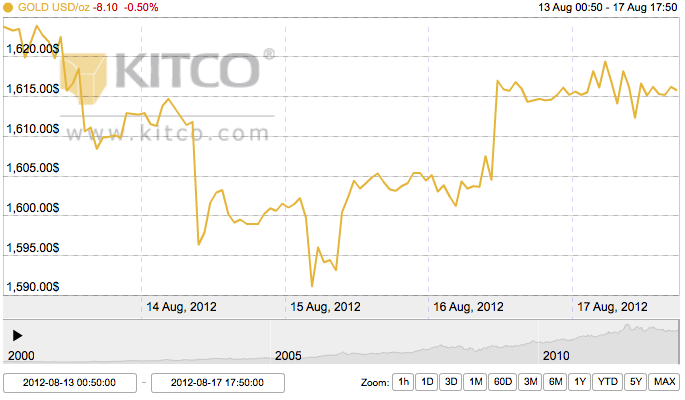Monday Open: $1,736.80
Weekly High: $1,736.80
Weekly Low: $1,708.30
Friday Close: $1,713.70
Gold faced a pretty steady downturn all week long in response to economic uncertainty across the board. Major factors leading to the average $20 loss this week included the U.S. fiscal cliff problem that looms on the horizon, continued European debt and a slow buying season in India.
However, gold has stayed over the $1,700 mark since the beginning of November and many are still predicting a climb above $2,000 in 2013.
Monday was a slow trading day in the U.S. since it was Veteran’s Day, and the price didn’t move much. In overseas news, Greece is undergoing fresh economic stimulus after a conference on Sunday, leading to new austerity measures. China faced unexpected growth, and Japan’s economic data points to a near recession, which would be a positive sign for gold.
Tuesday began the slow path downward as disagreements arose among the European Union as to when to disperse Greek’s bailout money. European economic woes put a damper on raw commodity markets, including gold. Meanwhile, in the U.S. Democratic and Republican parties are at a standstill as to how to deal with the upcoming fiscal cliff by the end of the year. If a decision is not made by December 31st, the automatic spending cuts and tax cuts established by the Bush administration will go into effect. The uncertainty here is already showing a volatile effect on gold, but the upside is that it could make the yellow metal seem even more a safe haven.
No real price changes happened on Wednesday, despite two conferences held in the U.S. – Obama addressed the fiscal cliff and the FOMC held their regular meeting, in which they discussed methods of determining when to raise interest rates. The implication is that they will continue their current monetary policy until 2013.
Thursday saw gold take a dip on the continued worries over the fiscal cliff and Eurozone, in which it was revealed that 17 countries are now in a recession. The technical definition of a recession is when a country experiences two consecutive quarters of economic contraction.
Friday continued the four-day dip on a slightly weaker dollar and no fresh news on any of the economic issues. This week was also the beginning of festival season in India, but buying is slow there due to a late harvesting season and the high price of gold. Next week will be fairly slow as the markets will be closed for Thanksgiving. Still, some see gold gaining from the fiscal cliff worries.


